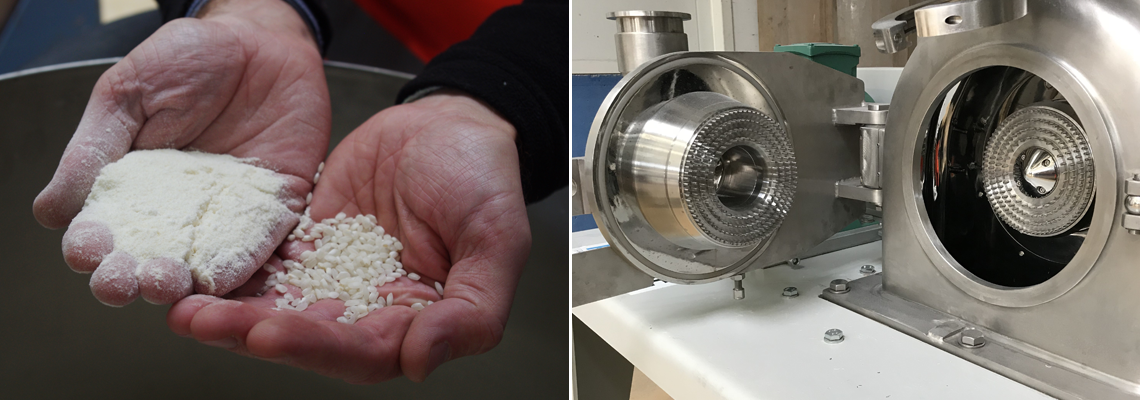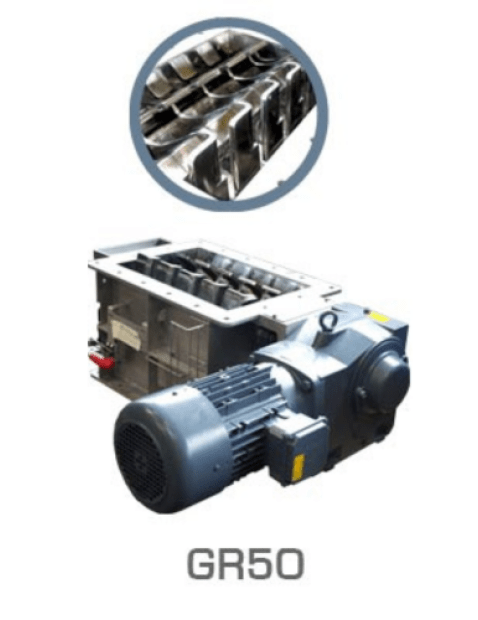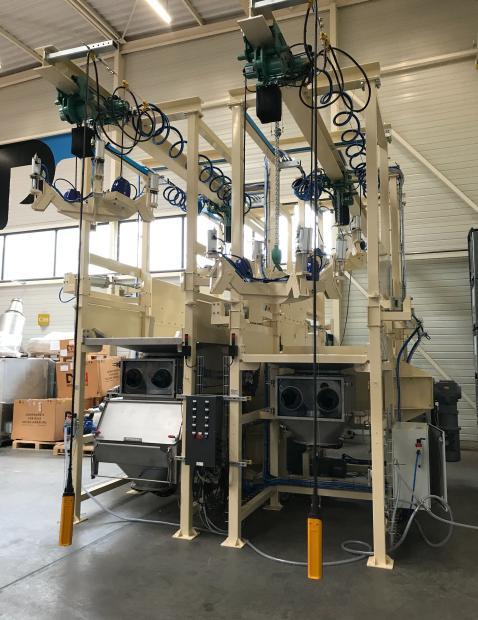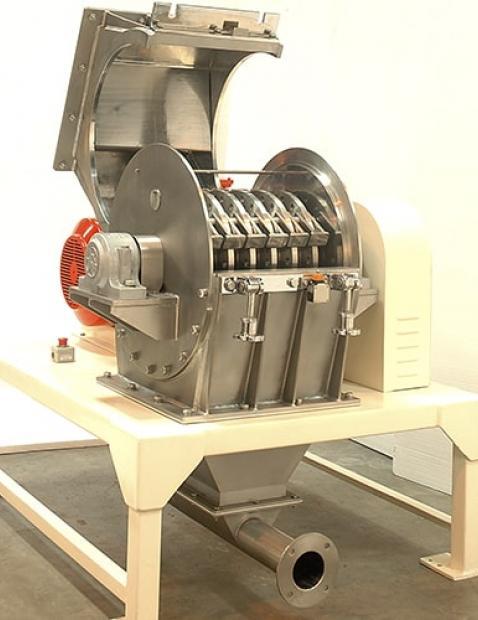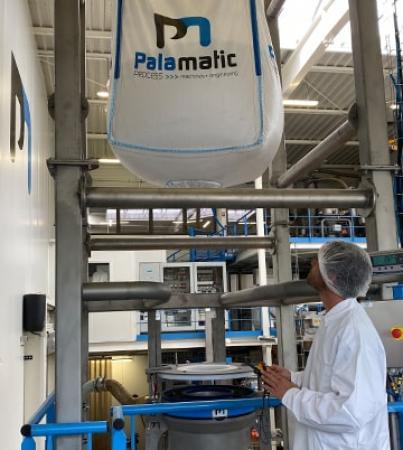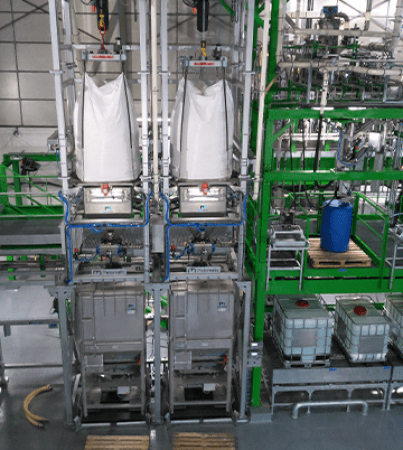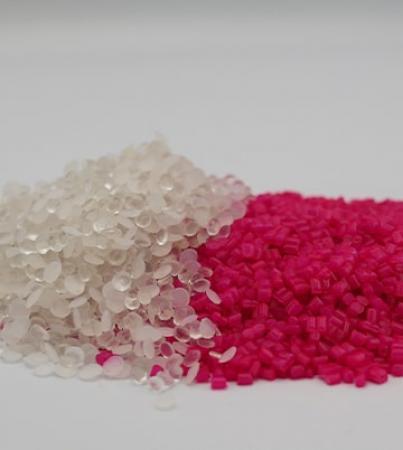1. Introduction
Palamatic Process UM grinding mills offer flexibility and ease of operation. Due to the wide variety of raw materials, where each particle reduction demand requires a customized solution, industrial mills can be fitted with different grinding tools. These easily interchangeable grinding tools are suitable for a wide variety of applications.
The versatility of industrial mills makes them very valuable in different industrial sectors: pharmaceuticals, food processing, mineral powders, chemicals (fertilizers, pesticides, paints, pigments).
2. Characteristics of the materials to be ground
The handling of a raw material in a grinding process will be closely linked to the nature of its particles.
The choice of an industrial mill depends mainly on three factors that must be taken into account:
- The nature of the raw material: is it abrasive, oily, hard, brittle, elastic, heat-sensitive, hygroscopic?
- The particle size distribution (average size and variance) of the final product being produced.
- The dimensioning of the industrial grinding mill: quantity and/or flow rate
Also, the technical characteristics of the raw material to be ground that must be taken into account are as follows: hardness, abrasiveness, adhesion, particle shape, slope angle, toxicity, moisture content, product temperature, moisture content, product temperature, bulk density, actual density, grain size...
The following questions should be asked:
- Can the material to be ground be extracted with solvents? If so, which ones?
- What is the required final grinding fineness?
- Danger of explosion? ATEX zoning?
- What equipment is installed upstream of the industrial mill?
- What equipment is installed downstream of the industrial mill?

If your require further assistance,
I am at your entire disposal.
Guillaume, expert in powders
3. Features for choosing a grinding technology
Should you choose a hammer mill or knife mill? The choice of the type of grinder will depend first of all on the nature of the raw material to be crushed, its hardness, its size and what will be done with it once it is reduced.
The choice of grinding technology is made in two steps. First of all, it is necessary to identify the appropriate types of mills by taking into account the size of particles required at the end of the grinding operation and the hardness of the raw material to be ground.
Then, it will be necessary to determine which grinding tools are suitable for this same application: pins (with or without screen), hammers (fixed or mobile) or knives.
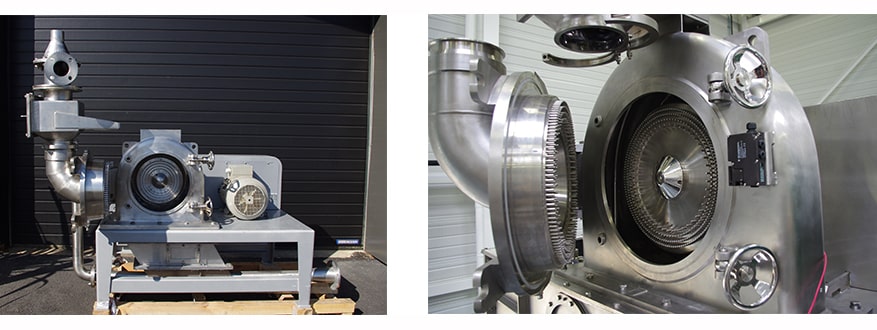
4. Tools available
Pins
The pin mill is supplied with a grinding chamber with a rotating pin rotor and a fixed pin stator to obtain a high powder fineness. The large grinding chamber even crushes raw materials that tend to clog. The grinding fineness can be adjusted by changing the speed of the spindle rotor but also by the feed rate of the mill. The centrifugal forces acting on both discs allow, among other functions, the micronization of wet, greasy or sticky products.
The use of pin modules with large chambers can also be used to ensure good heat dissipation in some cases and thus to process heat-sensitive materials such as cocoa, for example. Cocoa must be cooled, in which case we will opt for a so-called "cryogenic" system. The bulk material is then made crushable by injecting liquid nitrogen.
Hammers
The hammer mill can be used to crush all types of cereals and dry products. Gravity feeding into the mill inlet can be manual, mechanical or pneumatic.
Robust, easily modular, rather simple to adjust and maintain, they are often found in the upstream phases of manufacturing processes where they serve as a pre-treatment of the raw material.
Knives
The knife mill is used, for example, for soft, fibrous or temperature-sensitive materials such as wood chips, cardboard, plastic, hollow bodies, hay...
When using a knife mill, the sample is fragmented according to the scissor cutting principle between the rotor blades and the fixed knives of the grinding chamber into smaller fragments until the final grain size is reached.














